Hyundai Ioniq 5, Porsche Taycan, Nissan Leaf, Polestar 2 and Volvo XC40 comparison review
We pit five of the best electric cars to arrive this year against each other to see which is king of the electric highway.
New Cars
Don't miss out on the headlines from New Cars. Followed categories will be added to My News.
A year ago there wasn’t much to whet the appetites of EV fans. But an onslaught of new models in the past year has prompted our first Electric Car of the Year award.
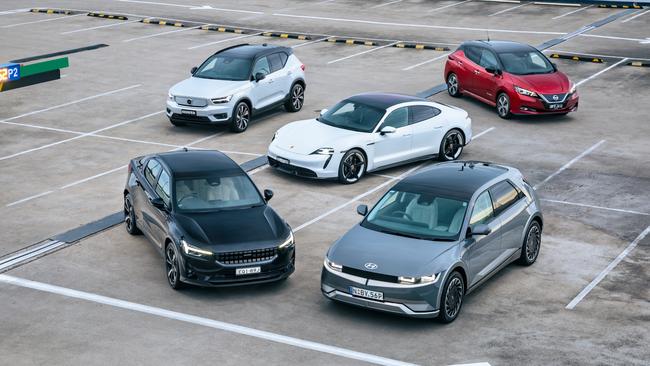
The eCOTY class of 2021 includes the fastest EV you can buy, a car that can power your house and a new brand with big aspirations. The contenders have undergone rigorous on-road testing before being scrutinised for value, performance, design, technology and safety.
NISSAN LEAF e+
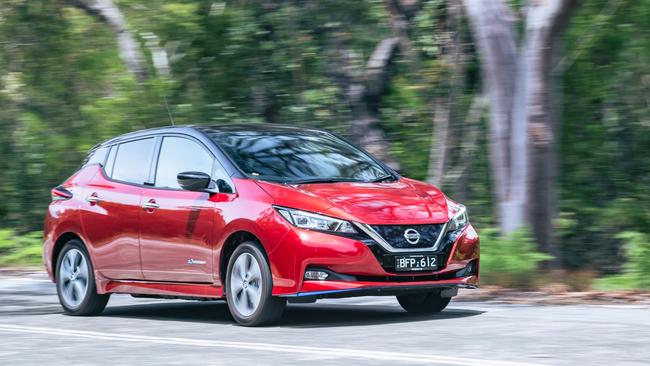
The near decade-old Leaf nameplate this year welcomed the e+ with a bigger battery for more power and a longer driving range.
For $64,990, the cabin lacks flair, there’s a foot-operated park brake and rear occupants miss out on air vents. Presentation aside, the equipment list is generous, with a punchy Bose sound system, adaptive cruise, blind-spot warning and a 360-degree camera.
Performance is also perky, although judges were less complimentary of the soft suspension that makes for a sometimes bouncy ride.
But it’s what the Leaf can do when it’s parked that makes it more appealing. It’s the only pure EV on sale that can feed electricity to the grid or power your house, albeit with expensive additional hardware.
PORSCHE TAYCAN TURBO S
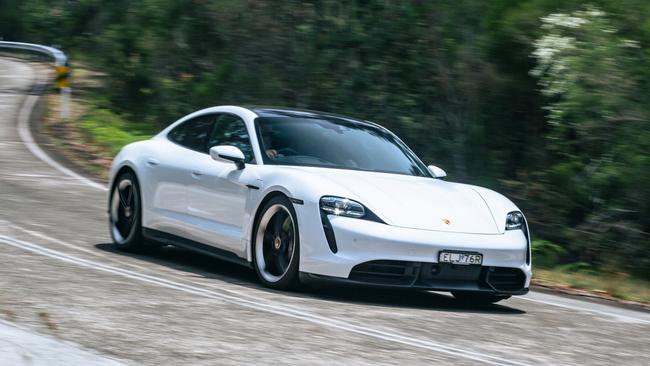
The Taycan is expensive, the Turbo S version more so – roughly $370,000 drive-away. As one judge noted, almost $100,000 of that price is made up by government taxes.
But the Taycan has three years of public charging included and is priced below the brand’s petrol-fed Panamera.
The Turbo S is brutally quick from a standstill, to the point where it almost hurts. The ease with which it piles on pace and achieves such ballistic acceleration is all but guaranteed to make you laugh out loud.
The brakes are brilliant and it scythes through a corner superbly but the Porsche’s party trick is how well it handles the everyday stuff. Despite the ridiculous pace it’s comfortable over bumps and a practical (albeit low-slung) size.
VOLVO XC40 RECHARGE PURE ELECTRIC
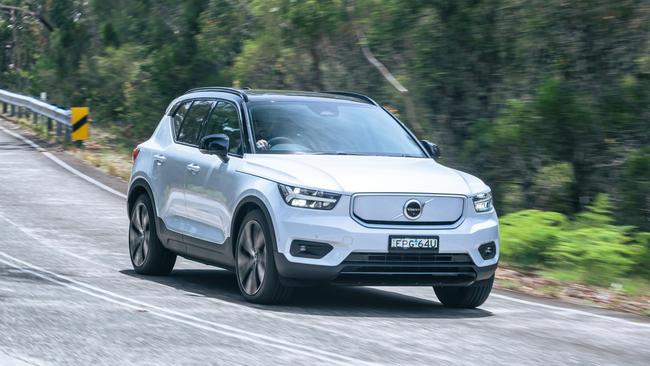
SUVs may be the darlings of the new-car market but they’re a rarity in the sub-$100K EV category.
The XC40 Pure Electric delivers SUV flavour for about $82,000. The Pure Electric is almost identical to the regular XC40, including its clean but stylish cabin that incorporates everything from a panoramic sunroof to a punchy Harman Kardon sound system.
The technology in the cabin is impressive, including a Google-based operating system (it still talks to iPhones) and over-the-air software updates.
Judges appreciated the SUV normality with associated interior space and practicality but the hump in the floor is a constant reminder that the Volvo started life as a conventional petrol car.
On the road the XC40 is an unassuming performance SUV.
Two motors combine to make 300kW for a 4.9-second blast to 100km/h. All-wheel drive ensures every kilowatt is put to good use.
The Volvo scampers around corners reassuringly, although its suspension booms over bumps. Judges deemed its 418km range respectable, but electricity use is high.
HYUNDAI IONIQ 5

Any preconceptions the Ioniq 5 is a hatch are dispelled by the broad cabin with plentiful room throughout and excellent vision. Only the lanky-legged in the rear may feel their knees are a little high.
The interior mimics the futuristic exterior. Dual digital screens dominate a dash brimming with sustainable finishes, including bio components extracted from sugar cane and corn. Bose audio and heated seats headline a long list of equipment, including smartphone connectivity and a comprehensive list of active safety technology.
It does, however lack a smartphone app to monitor the car’s charge and turn on heating and cooling remotely.
In single motor rear-drive guise the Ioniq 5 pulls strongly and is refined and responsive.
Suspension is supple but struggles to deal with bigger bumps, a feeling more pronounced on country roads.
That the EV newcomer has 800V charging accepting 300km of range (451km total) in 15 minutes adds to its appeal. It also helps justify the circa $77,000 driveaway price that sparked debate.
POLESTAR 2
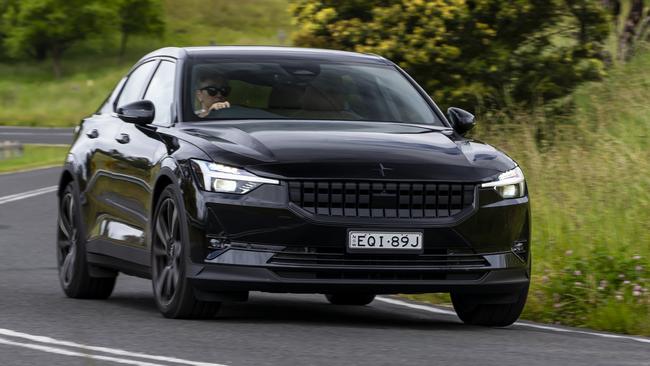
As the EV offshoot of Volvo (owned by Chinese maker Geely), Polestar leverages the engineering nous of its Swedish part-parent.
The Polestar 2 won praise for its attention to detail, quality finishes and style.
As one judge noted: “it certainly feels like a $70,000 car”.
Pricing that starts at about $65,000 drive-away with five years of servicing included adds to the appeal.
But blind-spot warning, rear cross-traffic alert and adaptive cruise, standard on some much cheaper cars, require a $5000 splash on the Pilot Pack, which also includes a 360-degree camera. Given the limited vision out of the rear of the Polestar, it is a notable omission. A long-range battery for a claimed 540km of range adds another $5000.
Driving the front wheels with a single electric motor provides decent acceleration. Taut suspension results in great body control, too, making the Polestar competent through corners.
But the suspension rattles and jolts over repeated bumps, lacking the finesse expected of a prestige car.
AND THE WINNER IS …
The Taycan is the best car, but with an eye-watering price it’s sidelined early. The Nissan Leaf e+ brings innovation in the form of vehicle-to-grid capability, but it’s a bit bland.
The XC40 Pure Electric packs performance into a classy SUV package, but its price edges it out of the sweet spot.
The Polestar is cheaper and delivers
longer range plus a more polished driving experience.
But a lack of standard safety equipment and a clunky ride saw it relegated to runner-up.
That left the Ioniq 5 to take the gong, thanks to its spacious, functional and futuristic cabin and impressive recharging tech.
Toby Hagon is the editor of EV Central.
Originally published as Hyundai Ioniq 5, Porsche Taycan, Nissan Leaf, Polestar 2 and Volvo XC40 comparison review


